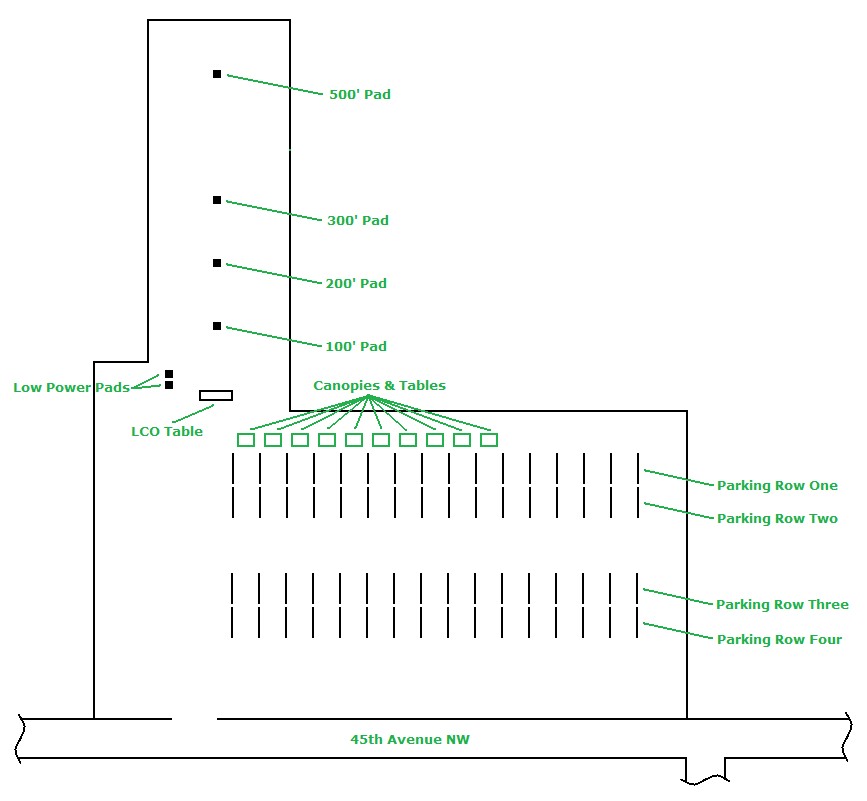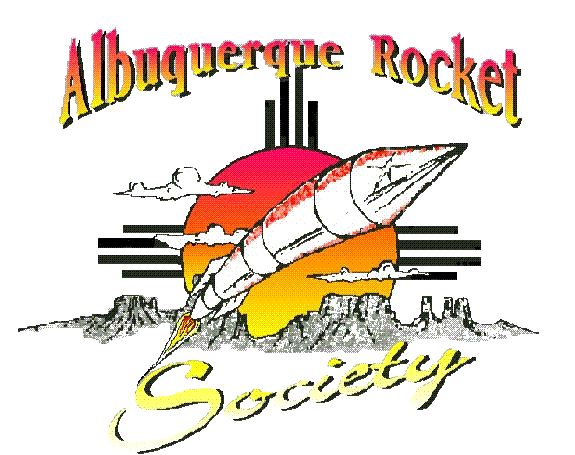The Albuquerque Rocket Society
An organization dedicated to the pursuit of Model and High Power Rocketry
Rio Rancho Launch Site Layout
and Information for New Participants
and Information for New Participants
General Layout

|
|
The above image is of the graded area of the launch site. The setup will always include the LCO table, low power pads, and the 100 and 200 foot high power pads. The remaining high power pads will be set up based upon need. ParkingUpon entering the parking lot, please park in a row appropriate for your visit as follows: Parking Row One: For those flyers needing space for a canopy, prep table, or require extra room or access to the flight line. Parking Row Two: For those flyers who can easily work from their vehicle, do not need flight line access, or need recovery vehicle exit capabilities. Parking Rows Three and Four: General parking for visitors and observers. Information for New ParticipantsNew participants planning on flying, should build their rocket and install the motor (should you need assistance, feel free to ask one of the senior club members). For safety considerations, do not install the igniter, but instead, tape it to the outside of the airframe (igniter installation is the last thing done before launch). The CP should be marked on the airframe to facilitate rocket inspection by the RSO (Range Safety Officer). Note: All flyers must sign a flight card & waiver before launching any rocket irrespective of size. Flight cards & waivers are available at the LCO (Launch Control Officer) table and must be filled out prior to each and every flight. The flight card is then given to the LCO who will direct you to the pad upon which to stage your rocket. Next, locate the RSO. He will typically be a senior club member (just ask!). The RSO will inspect your rocket and determine if it is safe to fly. If so, he will direct you to the LCO table where you can obtain a flight card. Important: It is the responsibility of the LCO to ensure the range is safe. Before launching any rockets, he will make sure the launch area is free of personnel and then announce that the range is closed. At that time, do not enter the launch area defined as 1) the area in front of the LCO table and 2) a distance to either side equivalent to the distance to the furthest pad in use and 3) a distance beyond the furthest pad in use equivalent to the distance that pad is from the LCO table. Rocket recovery or staging in the launch area can only occur when the range is open and that fact has been announced by the LCO. Some Do's and Dont's: 1) When launches are occurring, watch the individual rockets during flight. Malfunctions infrequently occur that could put a non-attentive bystander at risk. 2) Do not attempt to catch a rocket descending under a parachute. Burns from hot motors and injuries from pokes can result. 3) Do not retrieve another flyer's rocket without his express permission...especially in the case of large rockets that may have unexploded ejection charges on board. 4) Be particularly careful with the little ones. Children are often overcome with excitement and will run into the launch area when closed to recover their rockets. 5) Bring water, sunscreen, sunglasses, a hat, and maybe some bug repellant (we do launch in the desert)! 6) Do enjoy your day! :-) |
